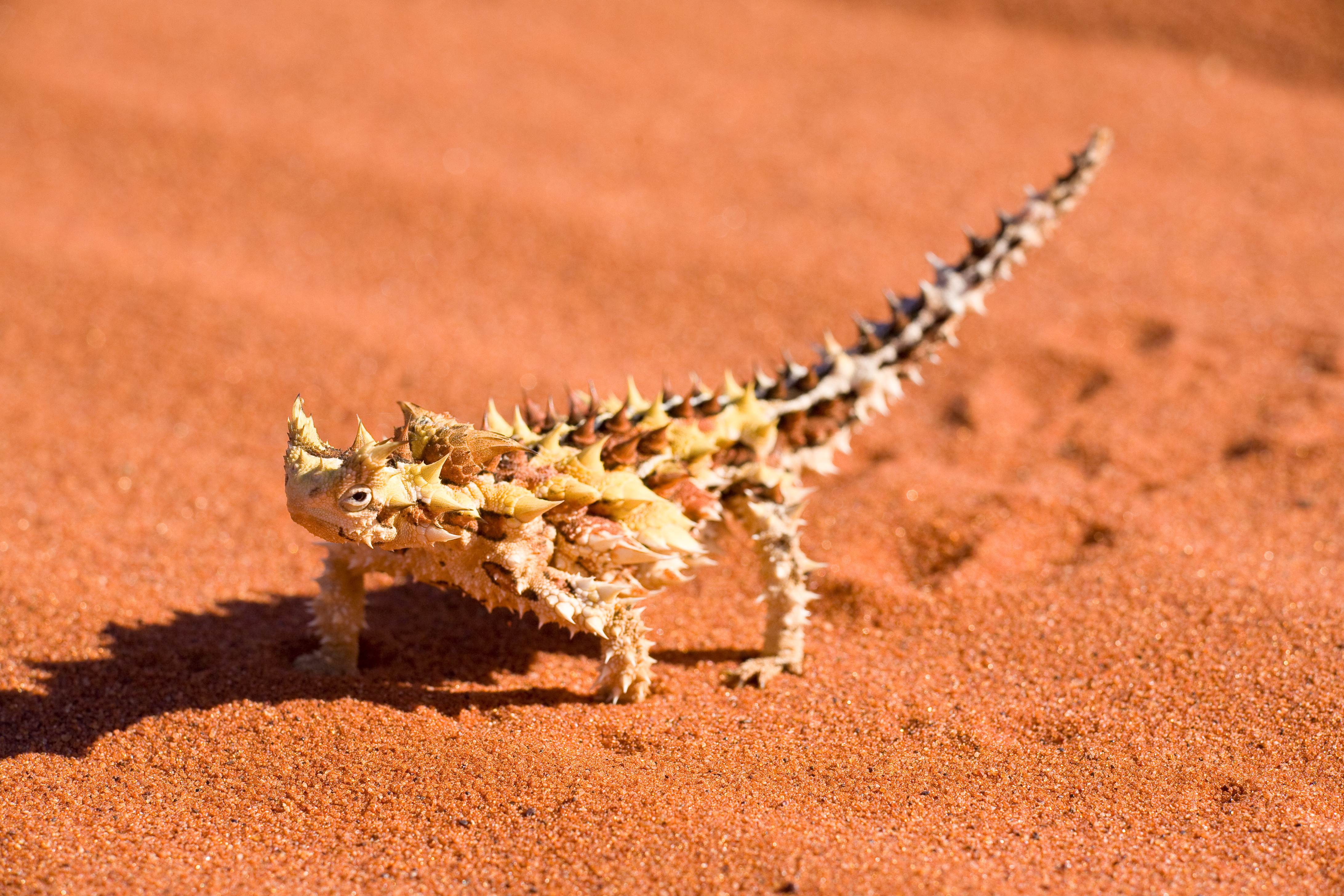
Scientists have discovered that thorny devils are able to absorb water through moist sand.
The thorny devil may not have to look far for a drink as they travel through the hot Australian deserts.
It was already known that thorny devils can drink by standing in puddles and absorbing water through skin capillary channels between their overlapping scales that lead to their mouth, but researchers have determined that rain and moist sand are the most likely water source on a regular basis.
A research team led by Philipp Comanns, a Ph.D. student from RWTH Aachen University in Germany and Phil Withers a professor from the University of Western Australia’s School of Animal Biology, concluded that these lizards can absorb water by flicking moist sand onto their backs, an important source of water as they travel through the hot Australian landscape.
“Thorny devils are the coolest lizards to study – everything about them is special compared to other dragon lizards, from their special water drinking to their diet and how they feed, how they move, and their cryptic thorny appearance,” Withers said in a statement.
The research team measured how the thorny devil could extract water from various sources other than puddles by weighing the lizard before and after exposing them to different water sources.
The results confirmed exactly how the lizard absorbs water through skin capillary tubes to its mouth.
According to an article in the Journal of Experimental Biology, Comanns discovered that the 40 g thorny lizards could absorb as much as 1.32 g of water during a one hour drinking session with an additional 1.28 g of water drank through their mouths.




